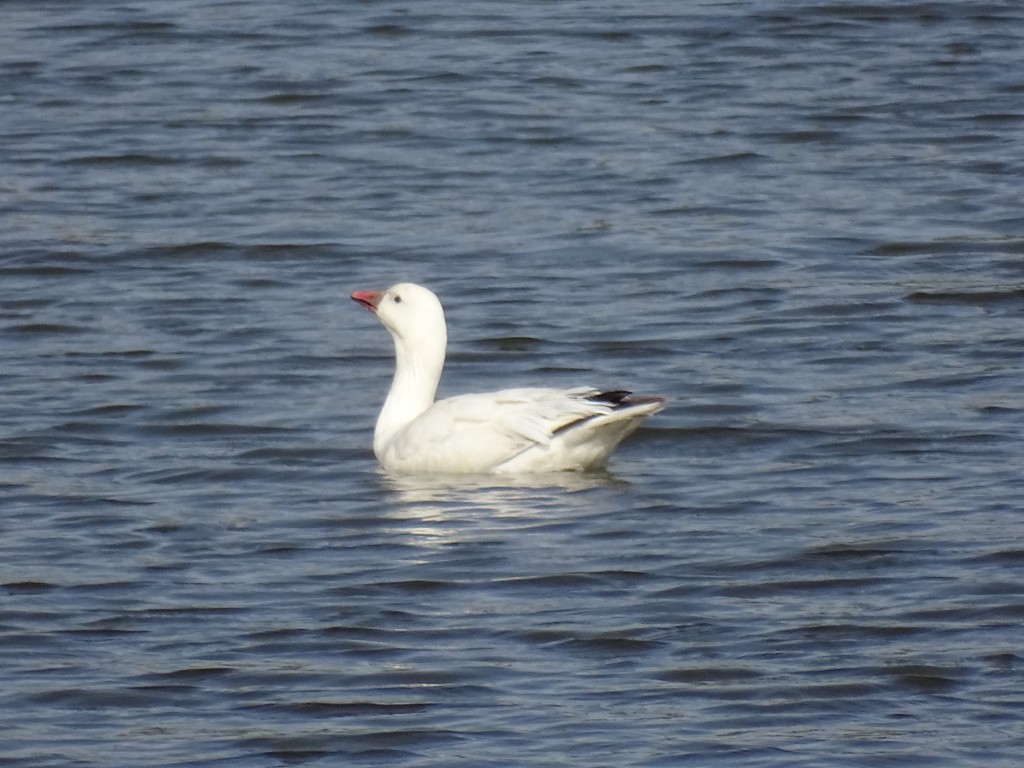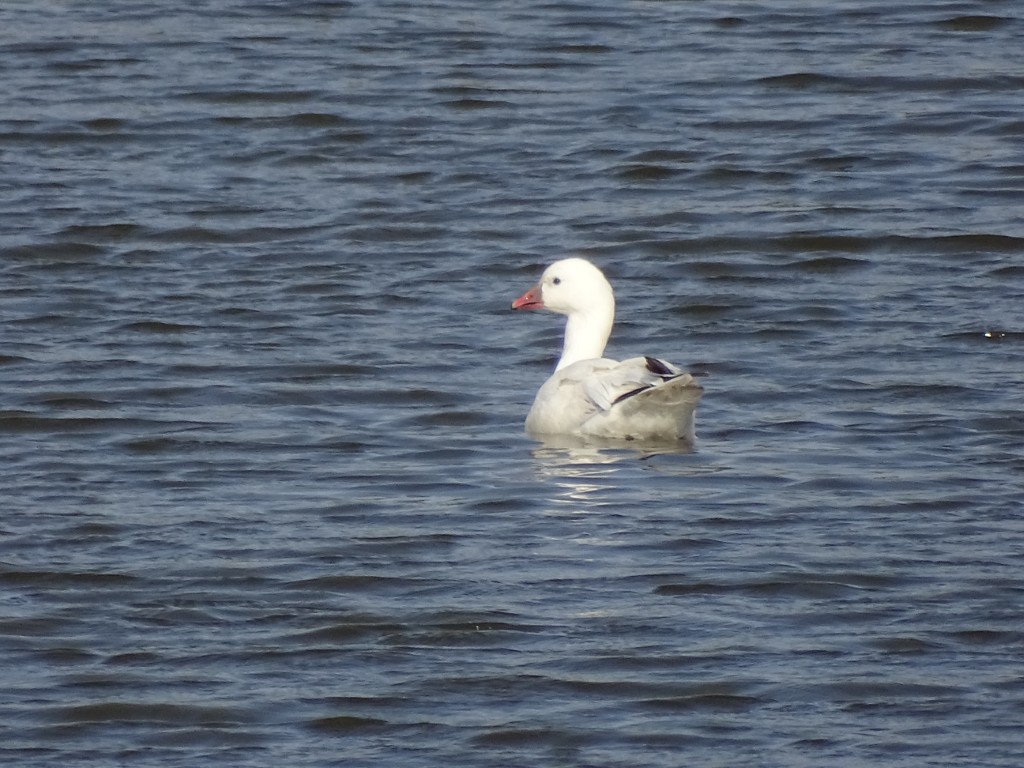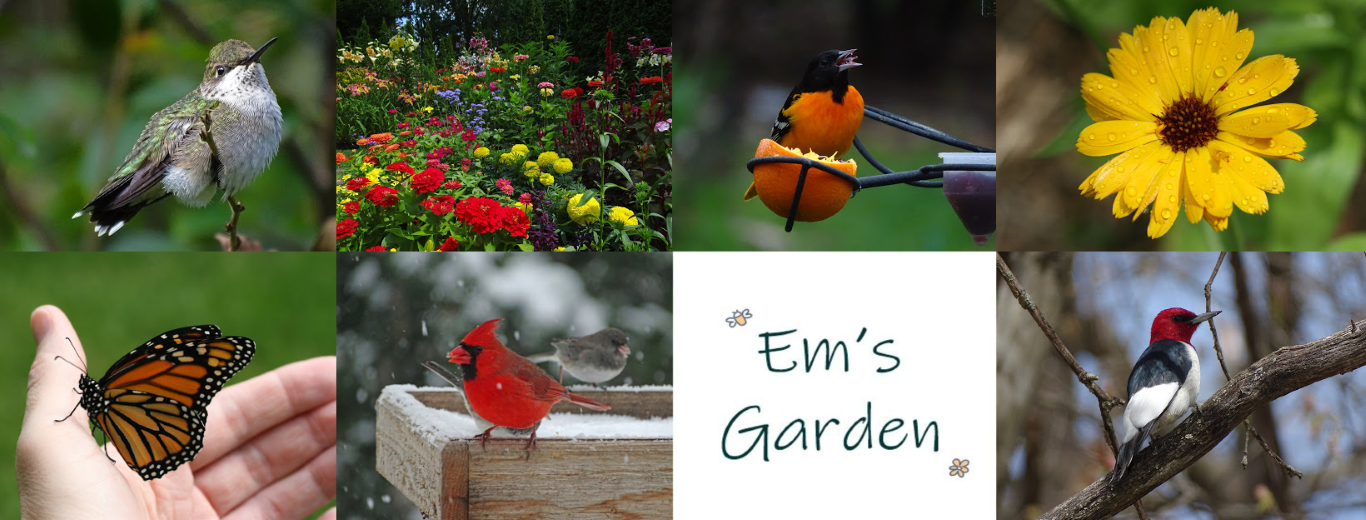I’ve been able to see and photograph 177 bird species so far this year including 7 first-time-ever species (“lifers”). My favorite sighting was in mid-May. Jill and I had already spent the day birdwatching at a marsh in another county, but once we got back to our city we decided to stop off at some ponds for some bonus birding.
Shortly after getting out of the car, we walked past a flock of Canada geese. I’d seen hundreds already that day and they had become background noise to my eyes and ears. But then I noticed something out of place. There was a smaller, bright-white goose standing in the middle of the flock. Soon he scooted into one of the ponds and we got a great look at him.
Isn’t he cute? This is a Ross’s Goose:

A Snow Goose and a Ross’s Goose look very similar, but the Ross’s Goose has the telltale stubby beak. Jill and I spend a lot of time looking for both species in March and early April. These birds often show up in ephemeral ponds in agricultural fields in the spring.
We did spot some Snow Geese for the first time ever, but even after several weeks of specifically trying to find a Ross’s Goose, we came up short.
Ross’s Geese are Arctic-nesting geese, so they breed during our winters. In their summer non-breeding season they can be found in Mexico and U.S. states like Texas, Oklahoma, Arkansas, Louisiana and California’s Central Valley. By mid-May they are usually scarce in Wisconsin, so this sighting was a special treat.
Ross’s Geese are very social and are rarely seen alone. Perhaps that’s why this late-migrating bird chose to hang out with a flock of Canada Geese.

At 23 to 25 inches long, Ross’s Geese are slightly larger than a Mallard duck.
Snow Geese and Ross’s Geese are nearly identical other than a “grin patch” on the beak of the Snow Goose and the slightly smaller beak on the Ross’s Goose. And I learned from experience this past spring that both traits can be very difficult to distinguish from a distance.
However, according to the Cornell Lab of Ornithology, there’s sometimes an easier way to tell them apart. A Ross’s Goose will usually have bright-white head and neck. But because Snow Geese root for tubers in marshes, they end up with yellow-stained heads and necks.
Now that I’ve seen a Ross’s Goose up close, it will be much easier to ID one next spring when the migration season starts all over again!
